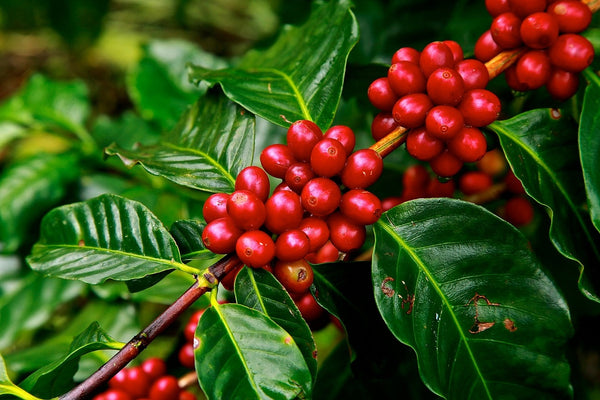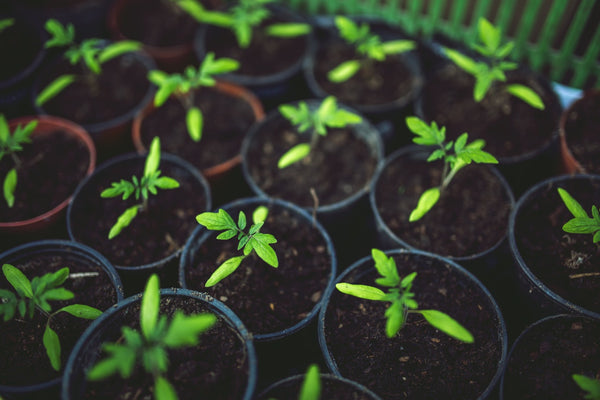Though fertilizer isn’t always necessary when it comes to planting and caring for your botanicals, it’s ideal for giving your greenery a boost. You can’t go wrong with extra nutrients, and the proper fertilizer can help plants fight off diseases, infections, and adjust to environmental stress more easily. It can also help your trees and plants heal any damages or breaks that they may have in their upper portions, or on their roots.
Selecting the right type of fertilizer and actually applying it properly can be daunting. But with our quick guide, we’ll tell you what type you need, when to use it, and how to use it. Check out our fertilizer tips and tricks below!
Fertilizer: When to Apply
Although you can apply fertilizer to newly-transplanted plants, we recommend that you wait for your plants to mature a little before they experience rapid growth. Rapid upwards growth, which occurs when fertilizer is applied to new plants, slows the development of a plant’s root system and causes new growth to be weaker.
Basically, they’ll be less prepared for adverse weather, long-term, healthful growth and more. Early applications of fertilizer can also burn young plant’s roots. As a rule of (green) thumb, wait to fertilize your trees and plants after one year of growth. Once your plants have strong, developed root systems, they can absorb nutrients from fertilizers for best results.
Spring to Fall
Spring is arguably the best time to fertilize. Fertilizing in the spring will give your plants an extra boost for the growing season. It’s best to wait about a month after the final freeze in your region to fertilize your plants, but April and March are generally prime times to feed your garden.
But how many times should you fertilize your plants? Well, the frequency depends on what type of plant you have. For example, Royal Empress Trees love fertilizer and can be fertilized up to twice a month during the growing season. Peach Trees, on the other hand, don’t need to be fertilized as often, and only need fertilizer once in the spring and once in the summer. It’s best to refer to our planting directions for each specific plant to determine exact fertilizer needs.
Don’t want to wait until spring? No problem!
Fall is also a great time to fertilize your plants. Fertilizing in the fall gives plants a strong boost before the winter. Do pay attention to the weather, and stop fertilizing about a month before the first frost. Inclement winter weather and freezing temperatures can damage the new, young growth promoted by fertilizer, so it’s important to time the process properly.

Fruit Production
It’s best to fertilize your fruit-producing plants in the spring before their fruit starts growing, and after their harvest (during fall for many plants). Fertilized fruit plants not only bear more fruit but they also produce larger and tastier fruit. Best of all? If you’re growing your fruit trees organically, you can use organic fertilizer to boost their growth. Organic fertilizers include compost, marine byproducts, minerals and more.
How to Fertilize
When you purchase your ideal fertilizer, you’ll notice a recommended dosage for the size of your plant on the back of the bag. We recommend using half of that dosage to start, which will help you avoid root burn. From there, it’s as easy as 1-2-3.
- Start by sprinkling the fertilizer on the soil around your plant. Add fertilizer to the area around your tree where your branches extend. Branches usually mirror the roots, so the branch spread on your tree will give you a good idea of where your roots are under the soil.
- After you’ve applied the fertilizer, give your tree a slow, deep watering by holding your hose and counting to 20, or until the surrounding area is moist.
- Fertilizer tablets should be placed in equal distances around the tree (where the branches spread), and placed about 6 inches beneath the soil. Once water hits the tablets, they’ll expand and nutrients will be carried to the roots.
Fertilizer Types
Now that you know how to apply fertilizer, it’s important to know which type to purchase. As we mentioned above, it’s best to buy the recommended fertilizer for your specific trees or plants. But we’ll go through some of the most common varieties to get you started.
There are many different types of fertilizer, usually with numbers like 10-10-10 or 29-0-4. These numbers are the NPK ratio. The N stands for Nitrogen, the P stands for Phosphorus and the K stands for Potassium. 10-10-10 is a well-balanced mix, while 29-0-4 doesn’t have any phosphorous.
Nitrogen
One of the three most important nutrients for healthy development in plants, nitrogen is an essential element in chlorophyll development, protein production and amino acids (also known as building blocks!). High-nitrogen fertilizers are known for causing huge growth in plants, which is why many types are rich in nitrogen or include it as the main component.Fertilizers high in nitrogen will also restore bright green hues to your foliage.
Phosphorus
Phosphorus is our second primary nutrient, essential for plant energy and a vital component of plant cell DNA. Fertilizers rich in phosphorus are usually used to promote flowering and fruiting.Phosphorous boosts blooms, increases flower production, and benefits root systems.
Potassium
Finally, potassium is our third nutrient and is important for plant nutrition since it aids the formation of proteins. Potassium thickens stems and leaves, enabling faster growth, drought resistance and disease resistance. Furthermore, potassium strengthens plant’s immune systems and benefits their overall health.

Fertilizer Rundown
You can shop for a fertilizer based on the numbers you need if you can determine your plant is lacking a specific nutrient, or you can use 10-10-10 as a general all-purpose fertilizer.
Like we said, it’s best to shop based on which plant that you have. If you’re unsure of what type to get for your plant, that’s also covered in our planting directions. But fertilizing your plants doesn’t have to be difficult! With our guidance, advice on specific fertilizers, and a little trial and error, you’ll be well on your way to maximizing your garden’s growth rate.


